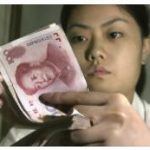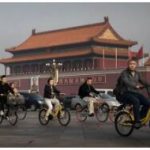While D. mentions, albeit fleetingly, the Arabs, Mohammed, India, any direct reference to China or better to the ‛Cathay ‘, the name by which it was known at that time, and to Japan is missing in his work.. And his contemporary was precisely Marco Polo (1254-1324), who, returning from a long stay in the East, had acquired fame, already alive, for his descriptions of those distant countries and above all of the great Empire of the Tartars, also masters of China. But D. shows that he is ignorant of the Polo and his work: perhaps because of that love of truth which he had nourished from since childhood – as he himself wrote in the Quaestio de aqua et terra – and which would have led him to doubt, like so many of his contemporaries, the reliability of the descriptions of the Million. For the two references to peoples and things of the Far East, contained in Cv II VIII and in If XVII 16-18, v. TARTARS.
Fortuna of D. in China. – A concrete interest on the part of Chinese intellectuals for D. begins only with the beginning of this century, when the well-known critic, journalist and politician Liang Ch’i-ch’ao (1873-1929) made D. one of the characters of his musical drama Hsin Lo-ma (The New Rome).
Compromised at home for his revolutionary activity, after the failure of the Reform movement of 1898 Liang had been forced to flee to Japan, where he had continued to carry out a propaganda action among the Chinese students residing there aimed at inculcating in their souls the principles of freedom, democracy, nationalism. Like his teacher K’ang Yu-wei (1858-1927), Liang also thought of pointing out to his compatriots the example of Italy: an ancient country of illustrious civilization like China, once again the seat of a great empire, subsequently decayed and invaded by the barbarians, but which had then managed to free itself and regain independence with its own strength. In his musical drama, which appeared in the Chinese-language periodical “Hsin-min ts’ung-pao” (The new people) of Yokohama in 1902 (nos. 10, 11, 12, 13, 15 and 20), Liang set out to summarize the most important episodes of the Italian Risorgimento, from the Congress of Vienna to the taking of Porta Pia. Of the 40 acts of which the play should have consisted, Liang wrote only six, as well as a prologue in which the character of D. appears, of whom he had learned from reading the essays of the first Japanese Danteists. In his play D. appears on stage astride a crane, as a “Taoist immortal”, dressed in silky robes and with a flowing beard, and in a long monologue, partly sung, partly recited, declares that he has done I return home after a thousand years to admire the progress made by his compatriots. After a brief exposition of the events that led to the unification of Italy, D. leaves the scene, still riding a crane, to go to China “in the company of his great friends: Shakespeare and Voltaire” (which proves that Liang Ch’i-ch’ao was unaware of Voltaire’s malevolent judgments about the other two poets). Perhaps because it was not finished, perhaps because it appeared in installments in a magazine with limited circulation to small groups of exiles, the drama had little luck. It was published in the edition of the complete works of Liang Ch’i-ch’ao (Yin-ping-shih chuan-chi, “Collection of monographs of the studio where you drink the slush”, Shanghai 1932, vol. XIX).
Another fleeting reference to D. is found in a poem by Su Man-shu (1884-1918), Buddhist monk, writer, poet and man of culture: “Dante and Byron are my teachers; their genius was like the river, like the sea; their life was straight as a thread “(Penshih in Su Man-shu ch’üan-chi,” Complete Works of Su Man-Shu “, Shanghai 1928-1931).
According to equzhou.net, the movement for the Literary Revolution of 1916, which supported the need to adopt a style more corresponding to the commonly spoken language and to abandon the use of the classical style, sought confirmation of these theses in the literary history of other countries and, first of all, from Italy, which, thanks above all to D., had been able to abandon the use of Latin to use the vernacular. The main promoter of this movement, the philosopher and scholar Hu Shih (1891-1962), wrote an article in the magazine “Hsin ch’ing-nien” (New Youth) in 1917 in which he invited Chinese writers to follow the example of Dante. One wonders, however, how the Chinese could ever have obtained direct knowledge of D.’s works, as long as there were no translations of it in their own language.
Wu Tsung-lien; but, perhaps because of the location in which it was published, it went completely unnoticed. The magazine “Shao-nien tsa-chih” (Youth magazine) contributed to make D. in China’s work better known, which in 1921, on the occasion of Dante’s centenary, dedicated an entire issue to our poet. Since then, the first translations began to appear, however, based on English or French versions. In 1924 Ch’ien Tao-sun translated the first five songs of the Comedy: Shench’ü i-luan (“Essay of a version of the DC”, Shanghai 1924). Ten years later Fu Tung-hua summed up the whole Comedy presenting it to readers as a novel (Shanghai 1934). Finally in 1939 the first complete version of Hell by Wang Wei-k’e was published in Shanghai, which was followed in 1948 by the versions of Purgatory and Paradise. According to what the translator writes in the third volume, his limited knowledge of Italian did not allow him to translate from the original, which he nevertheless kept in mind, relying mainly on French and German versions. La Vita Nuova was translated by Wang Tu-ch’ing (Shanghai 1934).
Among contemporary Chinese authors, Kuo Mo-jo (b.1895), the main cultural personality of China Popolare, wrote in 1923 a poem inspired by the fifth canto of Hell, in which he pretends that D., attracted by the beauty of Francesca, express the desire not to leave Hell anymore in order to stay next to her (Mo-jo wen-chi, “Collection of the works of Kuo Mo-jo”, Hongkong 1957, I 185). Kuo Mo-jo pushed his admiration for D. to the point of comparing himself to the poet. So he did in his youth in the autobiographical short story P’iao-liu san-pu-ch’ü (Three songs of a dissipated life), in which he describes the departure of his Japanese wife, forced by misery to leave China to return to Japan. together with their children. At the moment of parting he greets the woman shouting: “Goodbye my Beatrice…!” and promises her to write, like D., a great poem that will make her famous (Mo-jo wen-chi, “Collection of the works of Kuo Mo-jo”, Hongkong 1957, V 117-157). Another writer, Mao Tun (pseudonym of Shen Yen-ping, b.1896), compared D. to the great Chinese poet Ch’ü Yüan in 1936: both poets – he wrote – suffered exile, but while the Chinese poet begs and invokes the return, the Italian poet bitterly criticizes. Mao Tun himself, who later became minister of culture of the popular China, argued the need to publish a series of translations of the main foreign classics, including D., during a congress of Chinese translators held in Beijing from 18 to 25 August 1954. The immediate result was a new reprint of Wang Wei-k’s translation e (Shanghai 1957) and a renewed interest in the work of our poet. This is confirmed by the article by the critic Ts’ai I entitled Lun hsien-shih chu-i wen-t’i (On the problem of Realism), which appeared in “Wen-hsüeh Yen-chiu” (Literary studies) I (1957) 1-21. In it the author argues with the Russian critic YY Elsberg, who, in the “Literaturnaya gazeta” of 10 May 1956, had written that realism in art would only begin with the Renaissance. Ts’ai I, on the other hand, argues that realism in art dates back to ancient times and in support of his thesis he cites the work of D., as an example of early realism. i (On the problem of Realism), which appeared in “Wen-hsüeh Yen-chiu” (Literary studies) I (1957) 1-21. In it the author argues with the Russian critic YY Elsberg, who, in the “Literaturnaya gazeta” of 10 May 1956, had written that realism in art would only begin with the Renaissance. Ts’ai I, on the other hand, argues that realism in art dates back to ancient times and in support of his thesis he cites the work of D., as an example of early realism. i (On the problem of Realism), which appeared in “Wen-hsüeh Yen-chiu” (Literary studies) I (1957) 1-21. In it the author argues with the Russian critic YY Elsberg, who, in the “Literaturnaya gazeta” of 10 May 1956, had written that realism in art would only begin with the Renaissance. Ts’ai I, on the other hand, argues that realism in art dates back to ancient times and in support of his thesis he cites the work of D., as an example of early realism.








